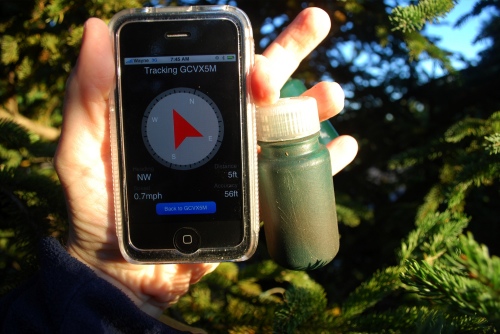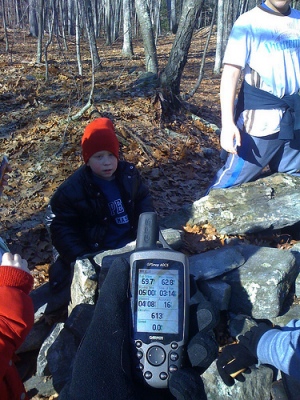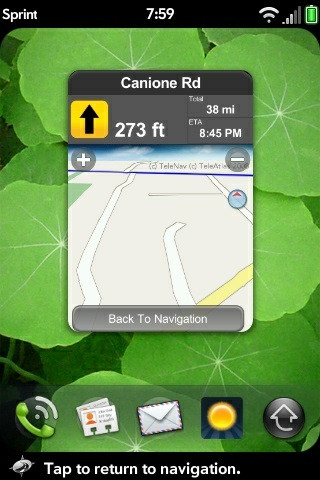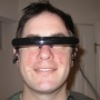It all started innocently enough when Christopher Gavula e-mailed the team about the Mapquest on iPhone article. Wayne responded with an email on how much he liked the Palm Pre’s navigation program and wished standalone GPS makers well because from his point of view the Pre’s included turn-by-turn Telenav software/GPS combination all but put the nail in the standalone automotive GPS coffin. And it all spun off from there. Join us in another behind the scenes look at the Pro’s and Con’s of integrated devices.
Wayne Schulz: Let me tell you I used Sprint Navigation on the Palm Pre and it’s awesome. I would classify it as an in-car GPS killer (no need to even worry about purchasing a fixed GPS system).
If I were a Garmin or Tom Tom I’d be very worried. The Sprint Simply Everything plans for Palm Pre include Telenav turn by turn navigation. The maps download fast and I received real time traffic and construction warnings as I was navigating. I think the writing is on the wall that standalone GPS companies will be gone very shortly.
Actually “gone” is an exaggeration – in my opinion most standalone GPS devices will become $49 Walmart commodity purchases within 2 years.
Dan Cohen: We will see this with a number of products/product lines.
The iPhone is enough of a blank slate that, as new functionality is provided it will move into more and more territory that was previously closed to all but one-function devices.
Tried to address that to a certain extent in the Flip Channels post.
Joel McLaughlin: I disagree on this. Garmin produces far more then car navigation GPS products. Car navigation systems are inadequate when hiking in the forest as they usually have no waterproofing or dust proofing. Having a road map doesn’t do you much good in the forest. Topographical Maps are more what you need there. Garmin also produces GPS nav systems for airplanes as well. Garmin is going to be around for quite a long time.
Tom Tom has a future too.
Why do I say they will both be around? Maps. If you have to download your map on the fly like I do on my G1 and on other cellphones they WILL FAIL when you have no data connectivity. Cell coverage is getting better all of the time, but there is usually no coverage in the sticks. Even in Kentucky I see no service on almost every carrier when driving between Columbus and Knoxville.
Doug Goldring: I agree with Joel, but for a different reason. Battery life. The more crap you cram into one device the more the battery fails. I have all but given up on being converged until batteries improve significantly.
Joel McLaughlin: Hmm….forgot about that one! That’s true too!
GPS in phones are just a convenience device. If you want navigation that will work anywhere on the globe, you want a dedicated GPS.
Chris Spera: You’re absolutely right, Joel. I use AT&T Navigator and said last year in all of my iPhone 3G prep articles regarding GPS that unless there’s ubiquitous 3G coverage, navigating via EDGE or GPRS was going to fail. The data connection is too slow to download map data in real time. Companies like Garmin and TomTom are going to be around, but I’m not certain that in-car GPS systems like Garmin and TomTom Go will be around. I think things like TomTom’s iPhone app and other PDA based GPS solutions will push PNA’s out.
Again, the key is ubiquitous 3G coverage. without it, carrier based GPS solutions won’t do well.
Christopher Gavula: I agree with this reasoning to some degree but I disagree with Joel. There is nothing that makes you have to download maps on the fly. You can store them in the device. Since the rest is just software there is nothing to preclude the device from performing the functions you get from a stand alone unit.
Chris Spera: Most PDA GPS solutions, TomTom in particular, whine at you if you run them without AC power/a car charger. You’re right about the battery, but when you have access to a car charger, things tend to be ok with the battery. I
don’t recommend traveling in a car with a converged device without one.
Dan Cohen: But when using it in the car you simply plug it in…
Doug Goldring: Yeah, but like Joel said, that does not work when you are not in the car. I am talking about more than GPS. Video, music, wifi, BT, GPS, these things all use battery which, by the time I want to make a phone call, does not bode well.
Christopher Gavula: Why not? Why can’t you get off road software and maps?
Joel McLaughlin: Because they don’t make em for Android or webOS…. 😉
Chris Spera: I agree with Doug’s statements about battery life. the more converged the device is, the more potential you have to use it off of an AC charger. Without a really good battery or backup battery (Mophie or other power pack, for instance), walk-abouts are an issue when it comes to power. Battery life will need to improve, or we’ll all need some kind of solar charger/panel on our devices so that they don’t run out of power.
Items like the DevoTec solar charger that I reviewed for Geardiary are a good thing, but without the right power tip, it doesn’t help much.


Cameras
Dan Cohen: With the Case-Mate Fuel holster you more than double the run time. That is a lot of time you can use it.
I still fall back on the argument that the iPhone is one of the best cameras going even though it stinks. Why? because it is with me all the time.
And with the GPS, the fact the the iPhone integrates with my address book or addresses in emails and I can route something with one tap makes it perfect for me. It is also the reason I will never have a standalone gps again.
Chris Spera: Isn’t that the case with any PDA/camera phone?? My Propel Pro has a 3.2MP camera and its with me all day, too.
Joel McLaughlin: 3.2 MP ISN’T enough to replace my 10 MP camera. Plus most phone form factors don’t allow you to frame the photo properly and don’t have a tripod mount.
Doug Goldring: True. But I think Dan’s point is when he is out and about, he is carrying his iPhone anyway and the camera is right there. He is not lugging around a tripod….well, maybe he is. I don’t know.
Joel McLaughlin: Good point, but I have yet to be happy with alot of pics on my G1. They are OK if that’s all ya got, but if I am going somewhere I KNOW I want to take pics, I take my camera. Heck I always have my camera with me anyway…seriously! At least when going to work. When I go tot church or the store I may not but…
Chris Spera: Agreed. However, those with kids don’t always take their 10MP DSLR with them everywhere they go, but they do have their camera phone. I agree that 3.2MP isn’t enough, but its a heck of a lot better than nothing, or most
camera phones (tho they are getting better).
With my two young boys, I can’t do that all the time. I just don’t have enough shoulder space… 😀
Doug Goldring: Actually, for most things 3.2 MP is plenty. 5 is way more than enough. The problem is that they use junk lenses. Nokia uses a Carl Zeiss lens, which is probably the best consumer level lens. Why not others? The digital processors are also terrible.
Chris Spera: Agreed on all counts. The problem is that these cameras were NEVER meant to take the place of a real digital camera. The problem is, they are also phones, and with us all the time, and therefore we use them more. That’s
why consumers are demanding better built in cameras, capable of both stills and video. The CZ lenses and better digital processors are more expensive, and while consumers want better cameras in their phones, they don’t want to pay more for them. I know a bit of a disconnect. we want better camera phones, but don’t want to pay more for them.
Doug Goldring: Agree. And the other problem is that lots of government buildings have no camera phone rules. Which means you have to leave your phone at home. I wish they would come up with a way to remove the camera if you want to.
Wayne Schulz: Camera phones are now to the point where I’m comfortable leaving my Nikon home. At least for outside shots. Inside photography is still a challenge for most phone cameras. Here’s a good example of what I’m talking about. I took this on the new Palm Pre while I was on vacation over the weekend. Hard for me to tell it wasn’t from my Nikon. The camera phones aren’t perfect (taking pictures in low light will expose most of their flaws) – however as Dan pointed out – the best camera is the one you have with you at the moment you need to take a picture. Since one of my phones is nearly always by my side – a camera phone is often the best choice for me.
Conclusion
There you have it. We all want to use the device we carry with us the most for GPS navigation but realize there are limitations to battery life that might make standalone GPS devices more desirable for some things unless your in a car.
We all want better cameras in our phone, but don’t want to pay for them or compromise on quality.
What do you the readers think? Will a phone with GPS navigation, 3.2 MP Digital Camera with a nice lens and lots of storage replace all of your stand alone devices? Is the future a device that is all these things or are we doomed to carrying a bag full of devices and cables?







Gear Chat: Pro’s and Cons of Integrated GPS and Cameras | Gear Diary http://bit.ly/9n3K9
Gear Chat: Pro's and Cons of Integrated GPS and Cameras | Gear Diary: The camera phones aren't perfect (.. http://bit.ly/f1Txp
Gear Chat: Pro's and Cons of Integrated GPS and Cameras | Gear Diary http://bit.ly/WP5yc
Installing software like Tom Tom on a smartphone would give you the best of both worlds – convergence and offline maps.
Dan: Where the Pre is going to be great for navigation (just like WinMo and Symbian devices) I’m not too taken with the possiblity of navigation on the iPhone. I can’t wait for Tom Tom to come out but the idea of the application closing when a call comes in or having to close it to browse music isn’t great…
Regarding Navigation, we had it through Verizon for a while and it worked well enough – though it drained the battery quickly as noted. Thing is, it was the only reason we had the ‘unlimited’ plan, and wasn’t worth the $10 a month. So we got my wife a dedicated car GPS, which has been great. The utility of phone vs. car vs. handheld depends on each person – I think the whole idea of phones skimming a certain portion of customers is definitely true … but that is true with everything.
I definitely agree that a phone cam is an amazing thing. My biggest gripe has been that Verizon is a PITA when it comes to getting quality photos OUT of your camera! With my Samsung on Sprint, it was simple to just grab the pix, and they were good enough that I used the camera even after I got laid off and was off Sprint!
One of the interesting changes with the new iPhone OS is that when a call comes in and then terminates you are returned to the application you were in before the call started. This was not true in the previous version of the OS. This makes the notion of navigation on the iPhone significantly more appealing.
Also note – that the phone app is one of the few that CAN run concurrently with other applications – the phone will run in the background during a call. I do this frequently while checking email or IM requests.
…and it will be much better when GPS is being used. You can take your call, but still use GPS. Very nice…